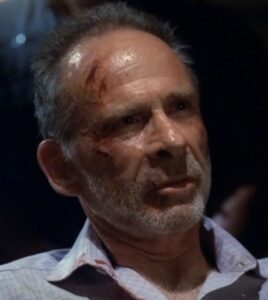Last time, I described the key ingredients to investing in a good hero. Now, let’s flip it around and talk villains. Because creating a convincing villain is, in my opinion, one of the hardest challenges as a writer. That being the case, this might be a big longer than my usual posts.
Like with our heroes, there are many factors consider:
▪ believability
▪ motivation
▪ backstory
The best way to combat a flat, boring villain is through a comprehensive development of the character’s backstory. After all, villains share the same rights as their adversaries. Shouldn’t they, then, get the same developmental considerations?
What’s the End-Game?
No one really chooses to label themselves “evil.” So discover your villain’s underlying motivations. Brainstorm their history. A person’s past reveals much about their present and future actions.
At the surface, it can seem like a lot of work. The research you dig up might never make the final cut. But hang on to your research. You never know when those pre/sequels and spinoffs might come knocking.
The Four Types
Now for the official breakdown. After reviewing some of my favorite villains, I’ve decided they fall into one [or many] of four categories:
Good Guys Turned Bad
Here we get galactic favorites like Darth Vader. In one of the most common cases of villainy, Vader started out as a sweet, innocent farm boy. His passion for the well-being of others initially promotes him to Jedi Master.
As we all know, stubbornness is a strong character flaw. Vader didn’t listen to his teachers and made a lot of mistakes because of it. Maybe Yoda was right in claiming Vader “too old” to train.
Bad Guys Turned Good
Stranger things have happened. Most of the baddies under this tier tend to “switch sides” as they see fit. Usually selfish to the core, these villains partner with the hero(es) when survival is at stake.
 Sometimes, though, we get a rare case. Despite his selfish nature, a baddie might evolve in his cooperation with the hero. For this case, I’d like to nominate Peacekeeper Captain Bialar Crais.
Sometimes, though, we get a rare case. Despite his selfish nature, a baddie might evolve in his cooperation with the hero. For this case, I’d like to nominate Peacekeeper Captain Bialar Crais.
Crais first appears on Farscape as the central villain, cold and apathetic. Crichton, our hero, instigates conflict with an accidental collision. The victim happened to be Crais’s brother. So through a purely emotional drive for revenge, Crais chases Crichton across the universe. Spoilers aside, Crais essentially becomes somewhat of an antihero.
On the other end of this spectrum is the villain with no redeeming arc. One reason for this might be that his true loyalties remain dubious until the very end of the story. Audiences wonder whether or not the hero should trust him. This is compelling in itself, keeping us on the edge of our seats. But sometimes it’s just fun to have our villain play cat-and-mouse.
Difference of Opinion
Not necessarily good or bad, he simply sees the world through a different filter. My best example of this is Magneto from X-Men. Now I’m no expert in comics, so my example is based solely off the live-action films.
Magneto and Professor X have a common goal. They even used to be friends. What makes one a hero and one a villain, though, is their perspective on their situation. Both want a world of harmony and peace for mutants. Professor X believes that’s achievable through educating others on what it means to be mutant.
With concentration camps as Magneto’s background, an approach of irony. He believes that non-mutants must be eliminated for peace among his kind. In essence, Magneto becomes the type of man he despises through his intent to annihilate the “lesser” species.
What I love most about Patrick Stewart’s and Ian McKellen’s versions of their roles is that, at the end of the day, they still nod their mutual respect for one another.
Intrinsic Psychosis
I’ve saved the best for last. Because sometimes villains are just plain ol’ crazy bats! There’s no hope for the poor souls in this tier. Evil from conception, but unique in backstory and life choices.
 Enter: Arvin Sloane. Terrorist. Dilettante. Widower. Grieving father. I’ve long admired Sloane for his ability to manipulate everyone and everything for his own sadistic, narcissistic self. Yet he’s a complex man, not without a [gravely misplaced] heart. Sloane cares about one thing, and he’ll do whatever it takes to track it down. Even if he has to kill the people he claims to care about most. He convinces himself that he acts for reasons A or B, but in the end he’s simply psychotic.
Enter: Arvin Sloane. Terrorist. Dilettante. Widower. Grieving father. I’ve long admired Sloane for his ability to manipulate everyone and everything for his own sadistic, narcissistic self. Yet he’s a complex man, not without a [gravely misplaced] heart. Sloane cares about one thing, and he’ll do whatever it takes to track it down. Even if he has to kill the people he claims to care about most. He convinces himself that he acts for reasons A or B, but in the end he’s simply psychotic.
The Intelligence Factor
Allowing your villain to generate their own backstory can add spice, complexity, and intrigue to your story. It’ll certainly make them more relatable. But to truly earn their formidable badge as the hero’s enemy, a villain should possess equal or exceeding levels of intelligence.
Final Thoughts
Why are so few villains gorgeous on the outside?